WIRELESS 5G INFRASTRUCTURE
SABIC PORTFOLIO OF SPECIALIZED MATERIALS FOR 5G APPLICATIONS
Global 5G success depends on meeting consumer demands for next-generation networking, from speed and reliability to sustainability. To meet these expectations, operators and device makers are implementing new technologies and expanding coverage and capacity. SABIC’s specialized materials enable you to evolve with the industry and collaborate on new applications, including 5G devices, and infrastructure and e-mobility components.
As one of the top global suppliers of specialty engineering plastics, SABIC maintains strong relationships with global leaders in the development of 5G telecommunication devices by providing them with a broad portfolio of advanced materials and unique solutions that they need to achieve long-term reliability, weight reduction, improved radio-frequency (RF) performance and innovative design.
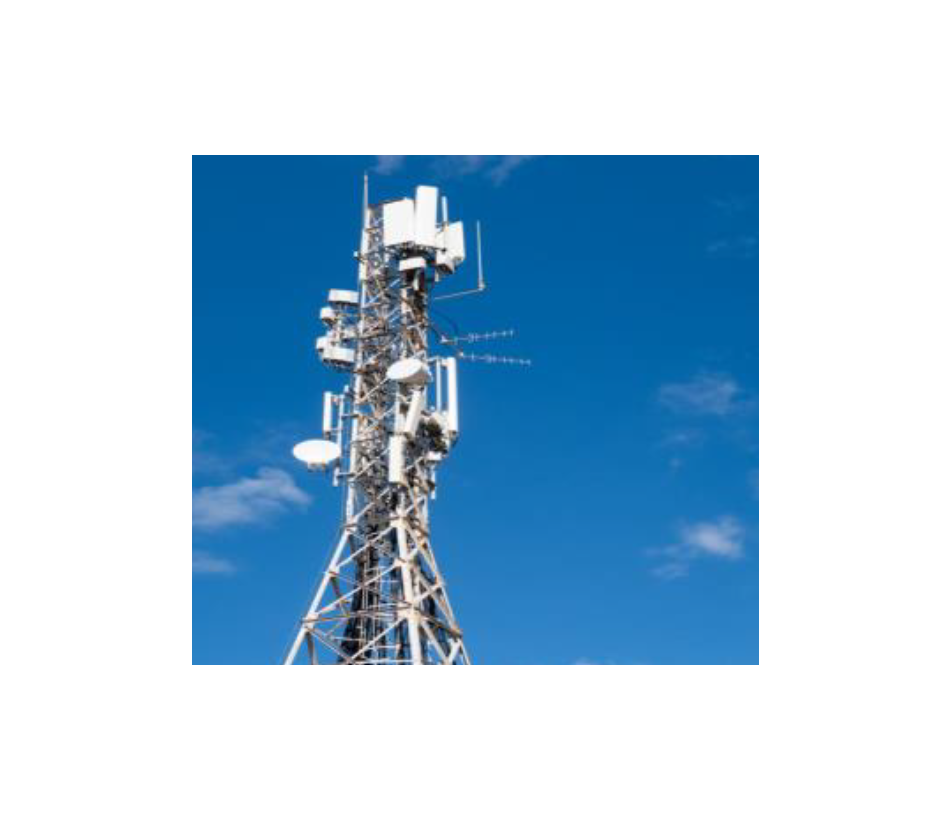

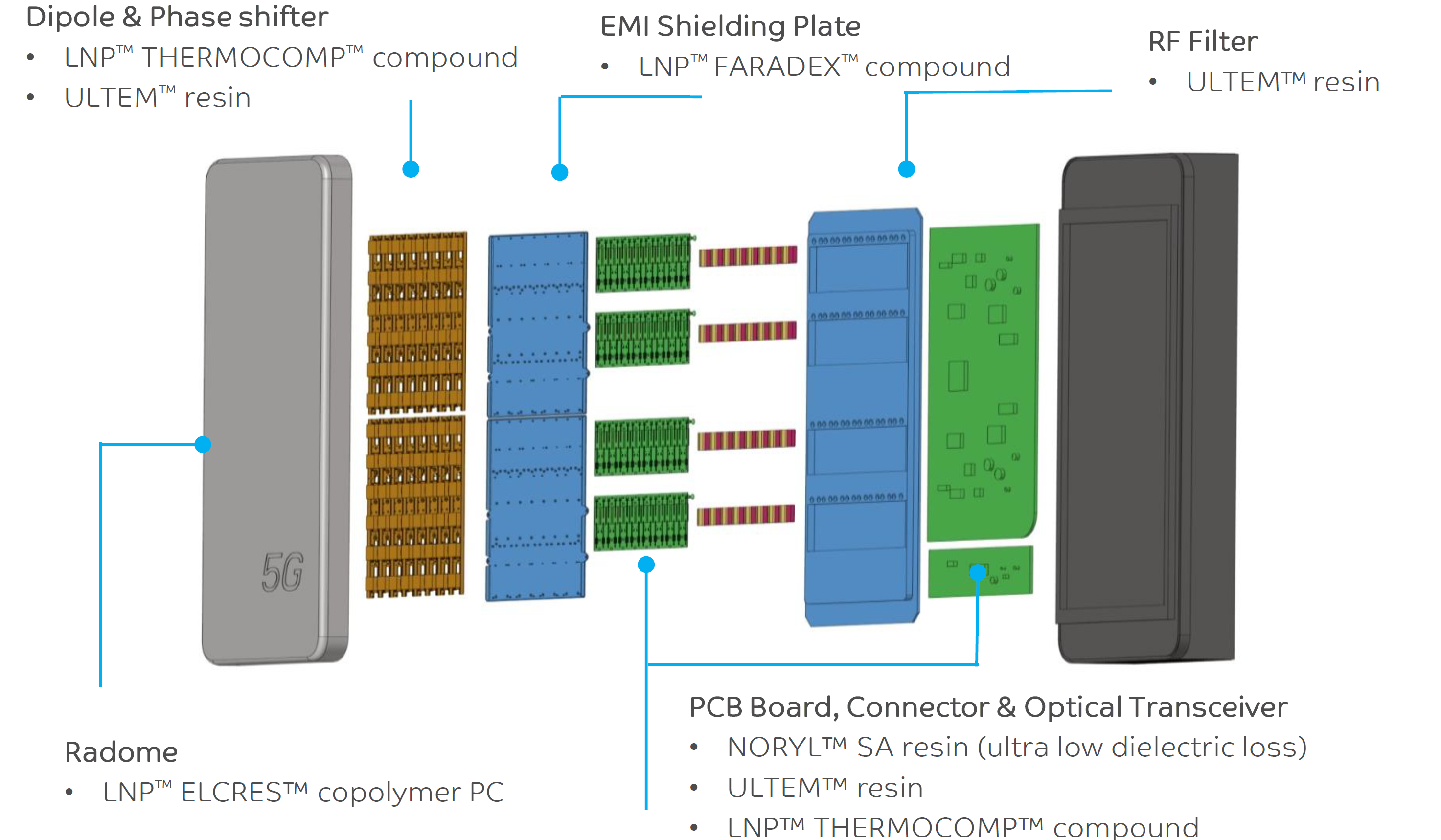
SABIC'S SOLUTIONS FOR 5G APPLICATIONS
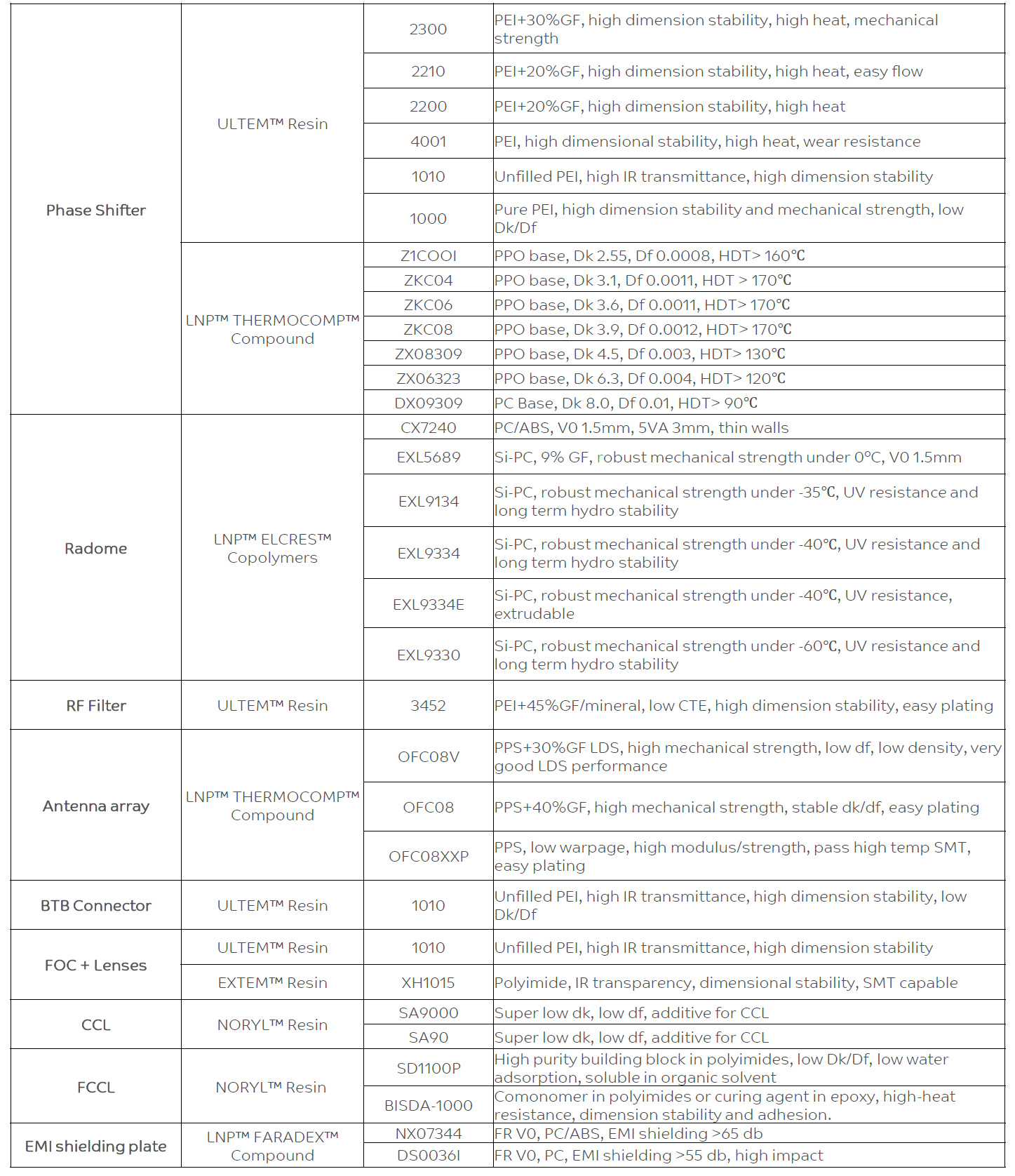
SABIC’S SOLUTIONS FOR PHASE SHIFTERS
A phase shifter is a device that can focus the radiation signal in a particular direction. It is well known that in-phase waves add up “constructively,” while out-of-phase waves diminish “destructively.” This same concept applies to RF signals. Phase shifters are placed between the radio and the radiating elements of an antenna. By tuning these shifters, the pattern shape and direction of the signal can be altered.
Why should the direction of the signal change? If capacity requirements increase or there’s a need to avoid interference between cell sites for example, the antenna’s vertical pattern can be tilted downward towards the ground.
There are different phase shifter types that can be grouped together in two categories:
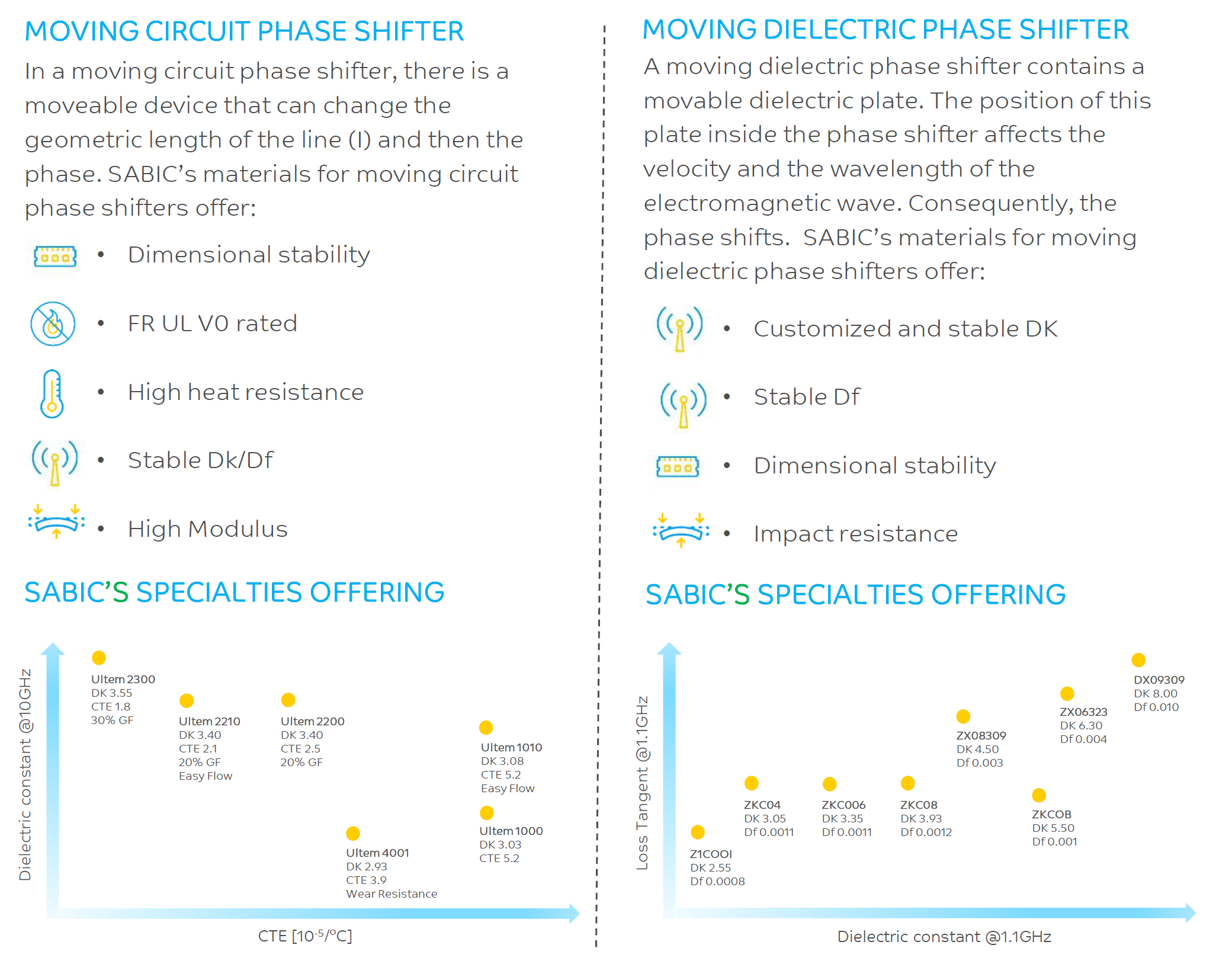
SABIC’S SOLUTIONS FOR RADOMES
A radome is an enclosure that protects the antenna from the impact of multiple elements such as wind and snow. On the other hand, it represents an obstacle that the signal has to go through. That is why the radome needs to be RF transparent to minimize the degradation of the electrical performance of the enclosed antenna.
Depending on the frequency range there are different requirements that the radome has to meet.

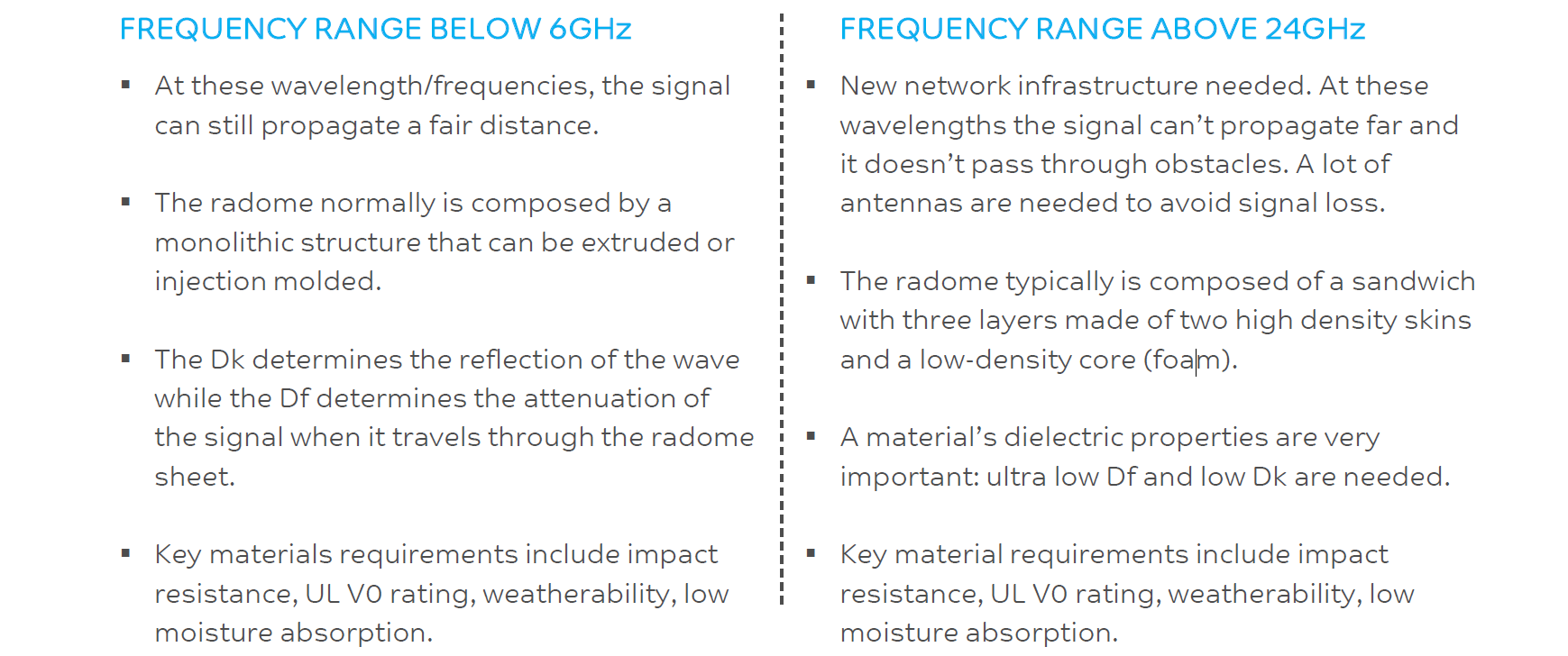
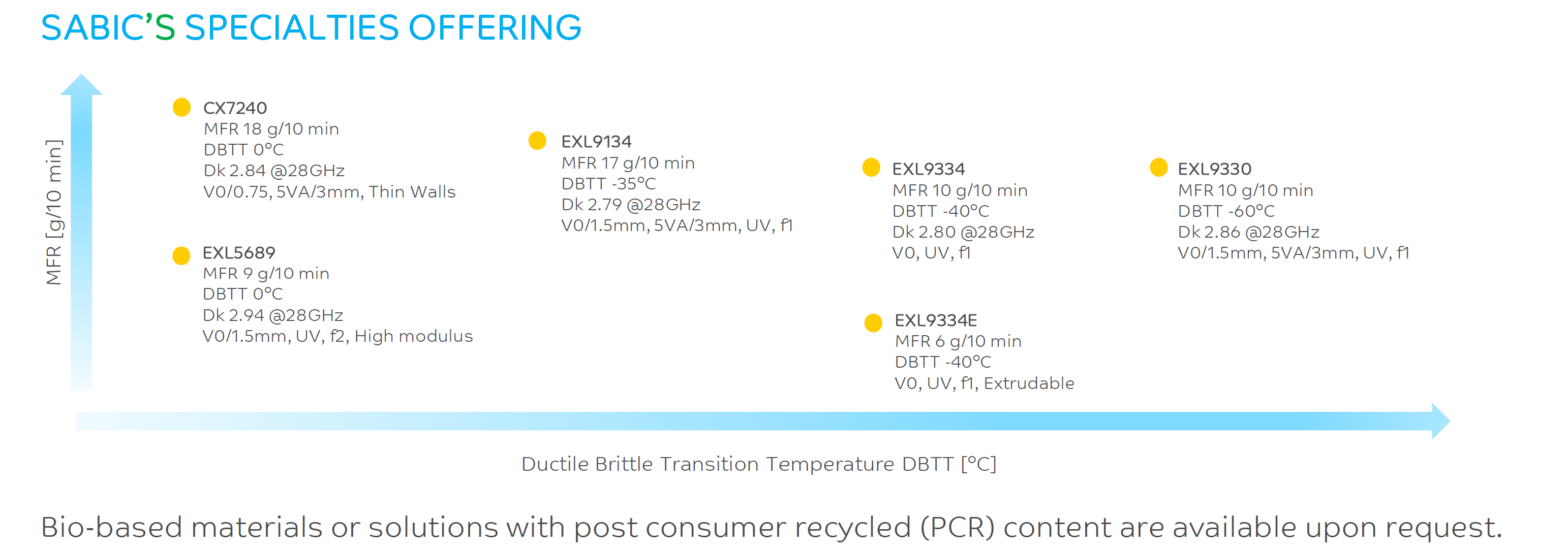
SABIC’S SOLUTIONS FOR CAVITY FILTERS
Radio frequency filters are one of the most critical components for RF and microwave systems. They are used to prevent unwanted signals from entering or leaving a system without attenuating the wavelengths that needs to pass through. The more antennas and frequency bands a system needs to handle, the more filters it will require to function properly. As an example, Massive multiple-input multiple-output (MIMO) systems, that leverage beamforming techniques to communicate with multiple users, use large antenna arrays (typically using 16, 32 or 64 array elements). Each element is connected to a filter.

SABIC’S SPECIALTIES OFFERING
SABIC ULTEM™ polyetherimide resin is a high-performance amorphous thermoplastic with a glass transition temperature (Tg) of up to 217°C, excellent dimensional stability, excellent mechanical strength and modulus, stable dielectric performance and good electroplating performance. It has long-term recognition by customers in the communications industry, and is widely used in tuning screws, fixed screws, cross coupler base and other internal and external components.

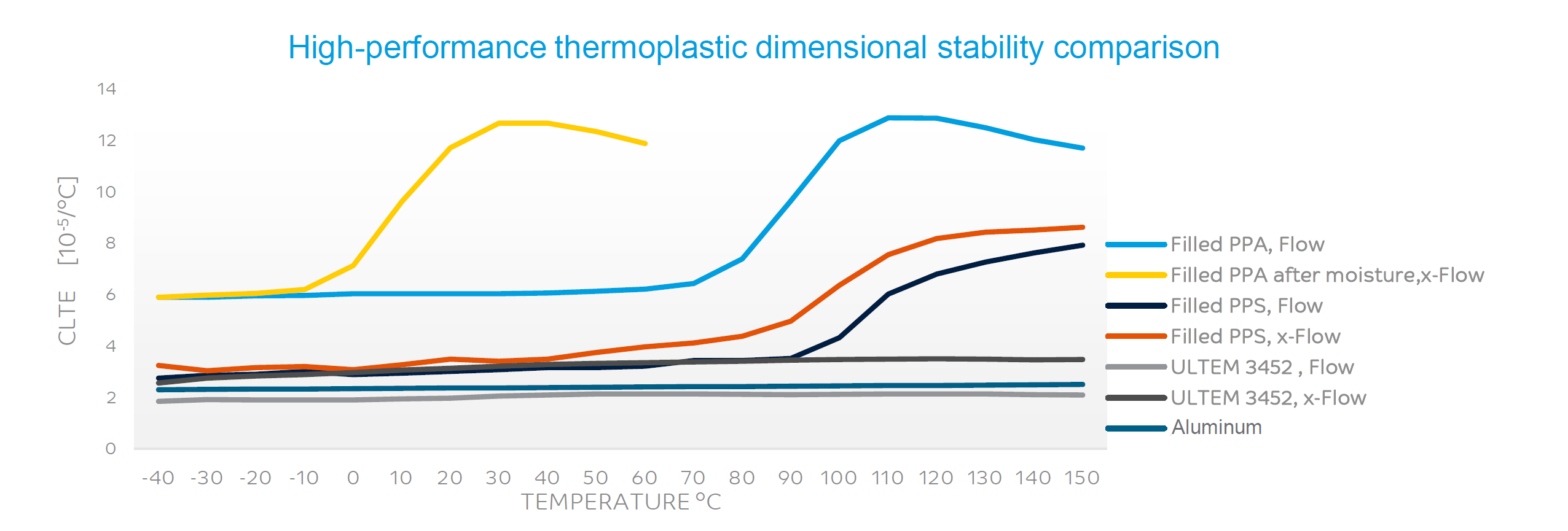
SABIC SOLUTIONS FOR ANTENNA ARRAYS
As RF antenna designs evolves to address higher demands in 5G, single band pole mounted passive antennas are being replaced with more complex multi- band and wider band antennas. These antennas required different materials and solutions to achieve a higher gain at microwave frequencies. An antenna array is a set of multiple connected antennas which work together as a single antenna inside the active antenna unit (AAU), to transmit or receive radio waves. It enables high gain beams and makes it possible to steer those beams over a range of angles. This component can be manufacturer with a combination of injection plastic and electroplating technology.
In general, there are two major technologies for the electroplating process, including selective plating and laser direct structuring (LDS) technology. Both have proven successful in typical dipole array designs.
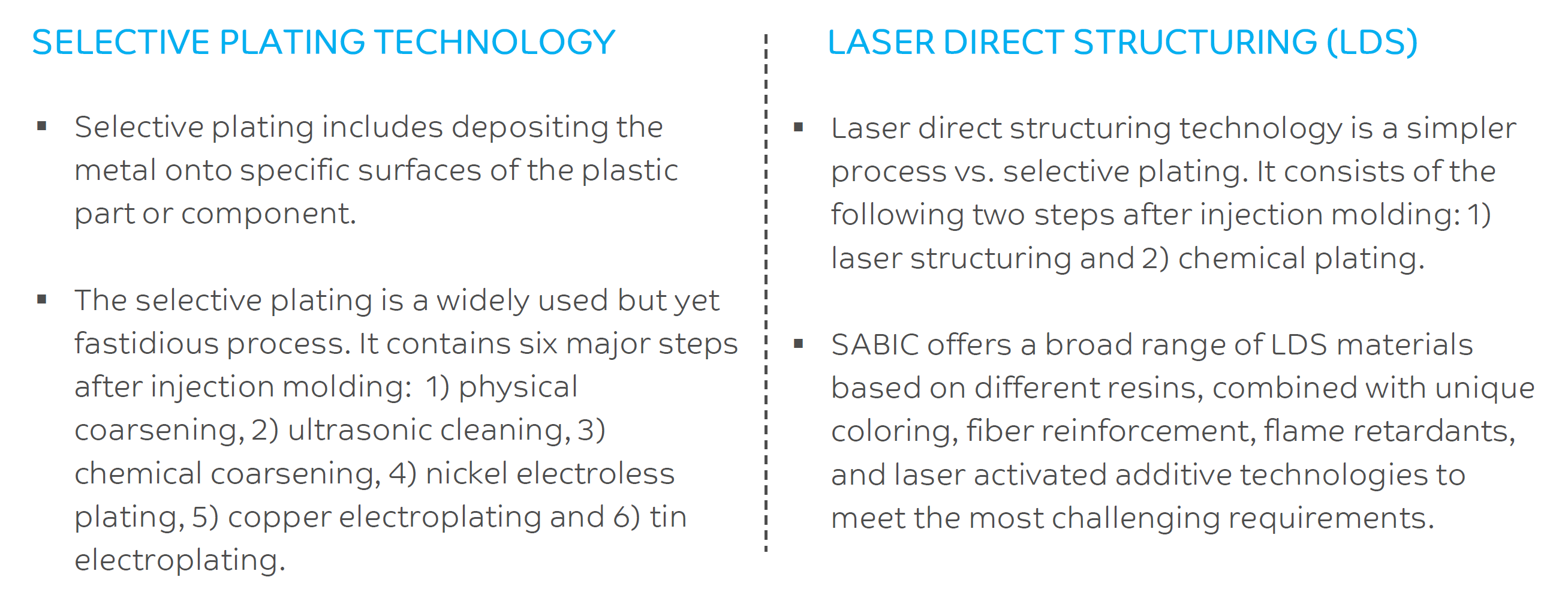

SABIC’S SOLUTIONS FOR 5G BOARD-TO-BOARD CONNECTOR APPLICATIONS
In the 5G era, in order to achieve high speed and hyperconnectivity, 5G base station antennas use large-scale MIMO technology to achieve high spectral efficiency of antenna arrays. The demand for antenna vibrators, filters, and board-to-board connectors that transmit RF signals is increasing exponentially. With the increase of the 5G infrastructure, the manufacturers of the related components and production processes are required to pursue lower costs and economies of scale, while combining stability and reliability performance.
For insulation in the 4G era polytetrafluoroethylene (PTFE) is used, and the CNC processing methods for PTFE provide slow cycle times and high costs in the 5G era. ULTEM™ resin, as an excellent insulation material, with excellent processing performance and installation convenience, can greatly shorten the cycle of large-scale mass production and reduce system costs. In addition, ULTEM resins provide good dielectric properties, technical strength and dimensional stability, making them the material of choice for board-to-board connector insulators.
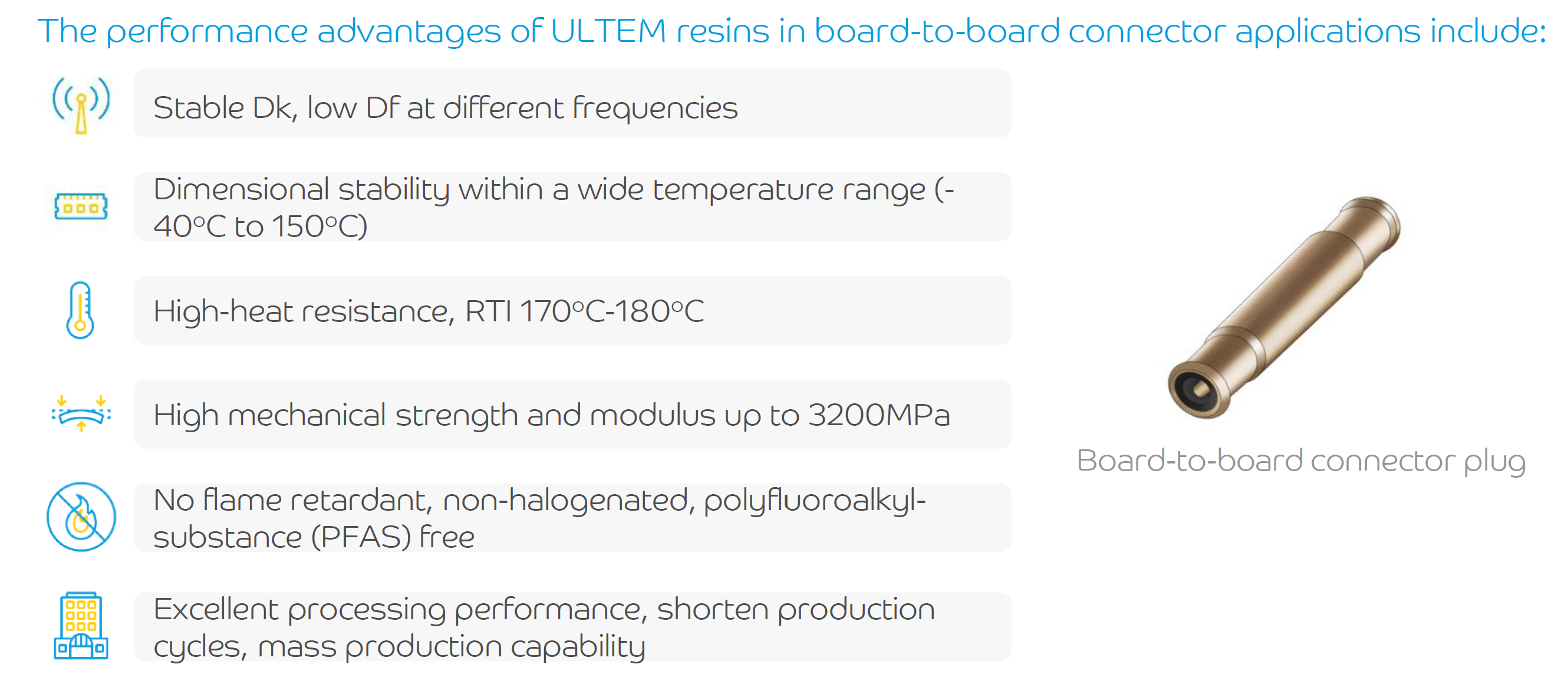

SABIC’S SOLUTIONS FOR FIBER OPTIC CONNECTORS AND OPTICAL LENSES
Fiber optic communication permits the transfer of data via infrared (IR) light pulse traveling through optical fibers. Lenses and connectors are both needed for assembly and installation of optical transceivers/sensors. These components require certain optical characteristics (high IR transmission with no defects, and high refractive Index) and very high dimensional stability during temperature and humidity variations. Further improvement of these properties are needed to accommodate the higher frequencies and data rates afforded by 5G technologies.
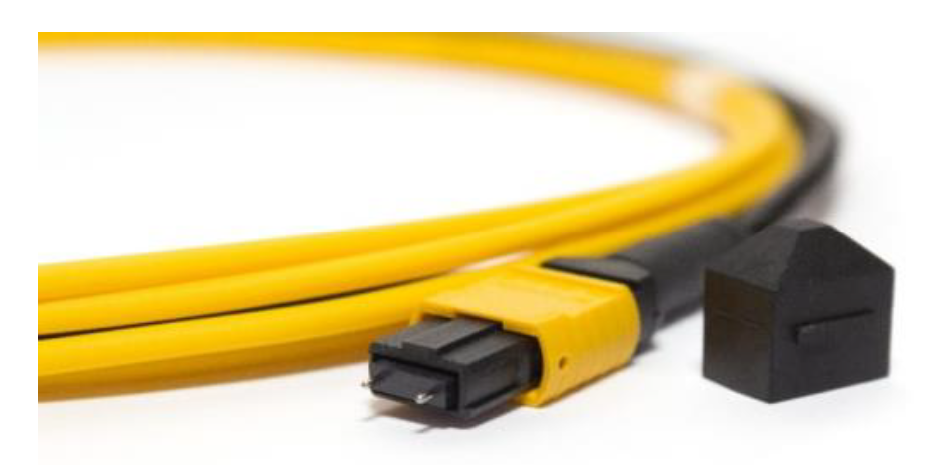

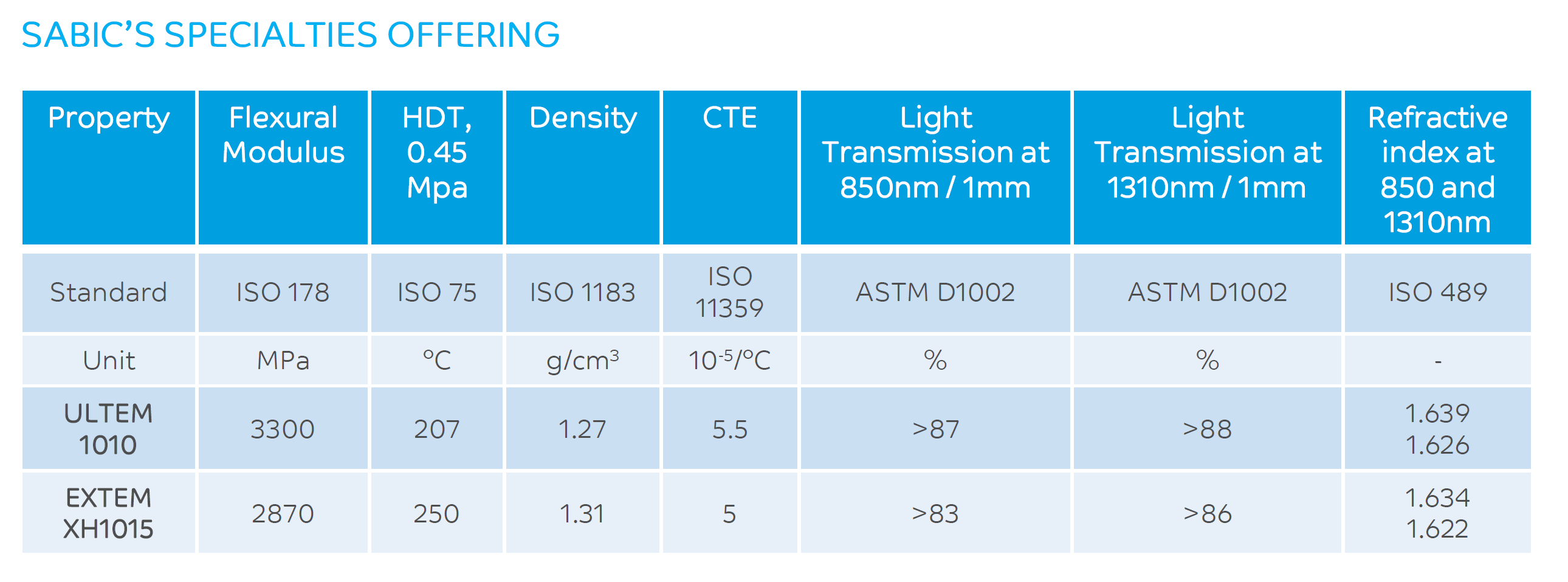

SABIC’S SOLUTIONS FOR RIGID CCL FORMULATIONS
SABIC’s portfolio of additives support formulators of rigid copper clad laminates (CCLs) in developing products that support 5G infrastructure technology requirements. When used in traditional CCL manufacturing, SABIC’s NORYL™ oligomers help formulators achieve high speed, low loss products that enable multi-layer printed circuit board designs with ultra-low insertion loss. Potential applications for these high speed, low loss CCLs include high speed servers, routers and switches as well as components in base stations and active antenna units.
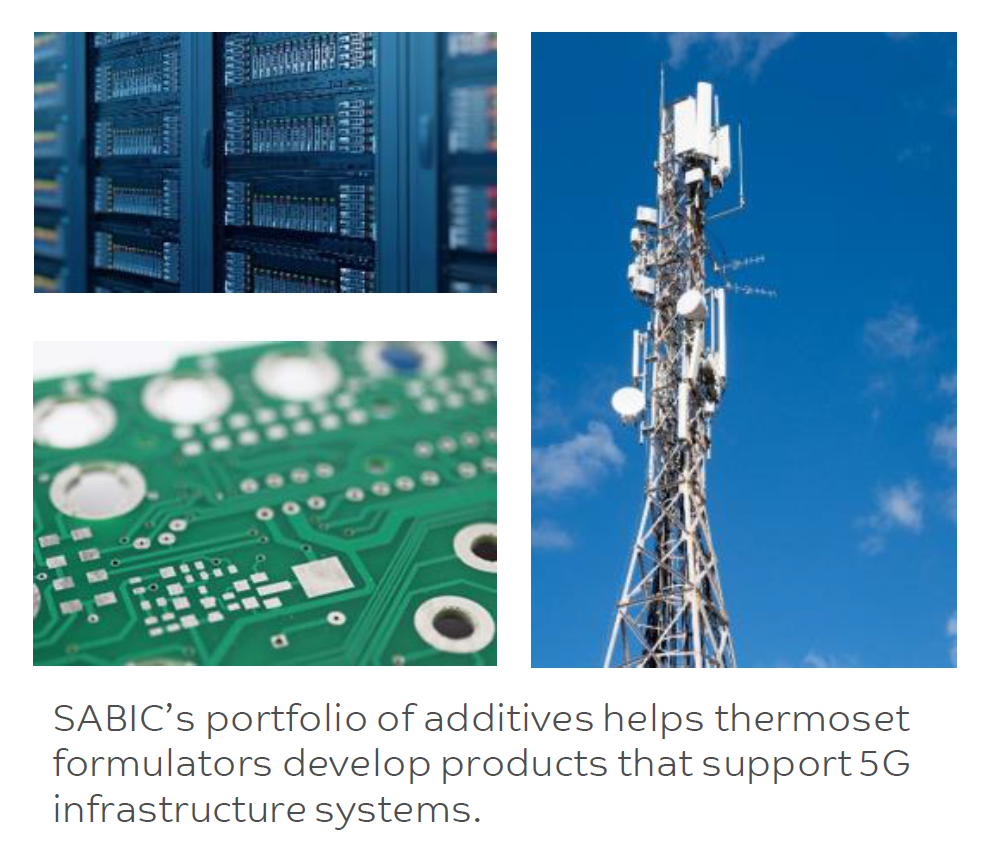
Improving dielectric performance in CCLs with NORYL oligomers
NORYL oligomers are based on polyphenylene ether and modified for improved solubility in conventional solvents and tailored functionality that can be used in various resin and curing systems. When incorporated into certain formulations, NORYL oligomers may provide:
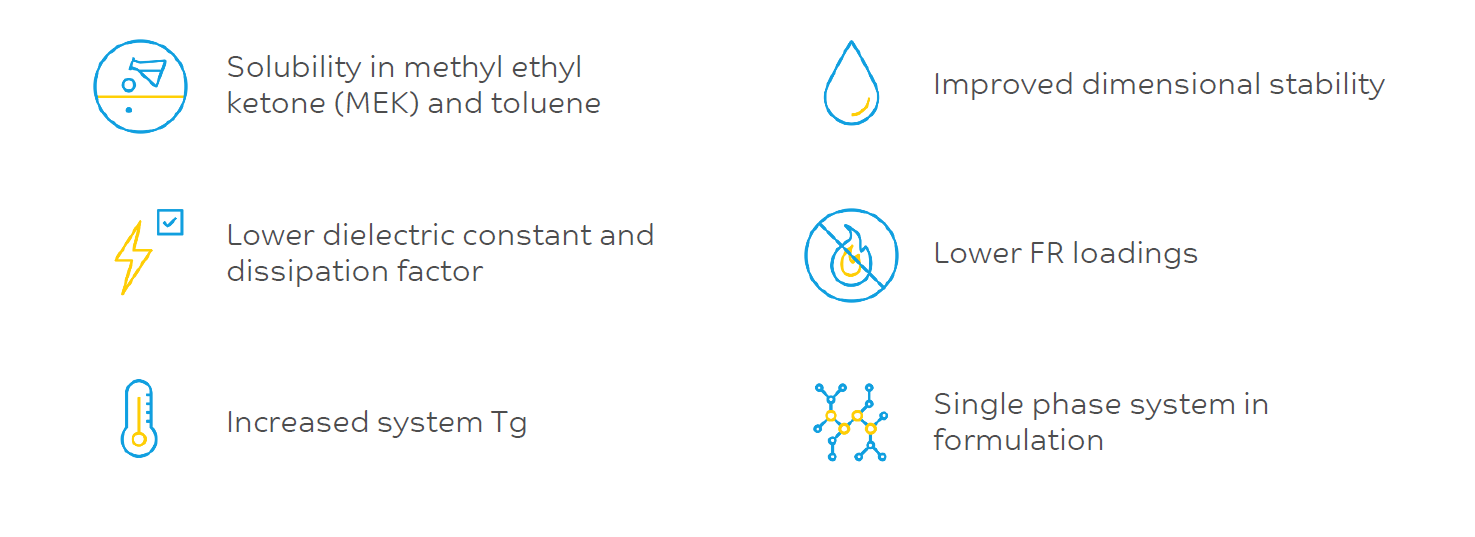

SABIC’S SOLUTIONS FOR FCCL FORMULATIONS
SABIC’s portfolio of additives support formulators of rigid and flexible copper clad laminates (FCCL) in developing products that support 5G infrastructure technology requirements. SABIC’s specialty dianhydrides used in polyimide film, adhesive or coverlay formulations can achieve a unique performance profile for the flexible copper clad laminate producer and flexible printed circuit board designer.
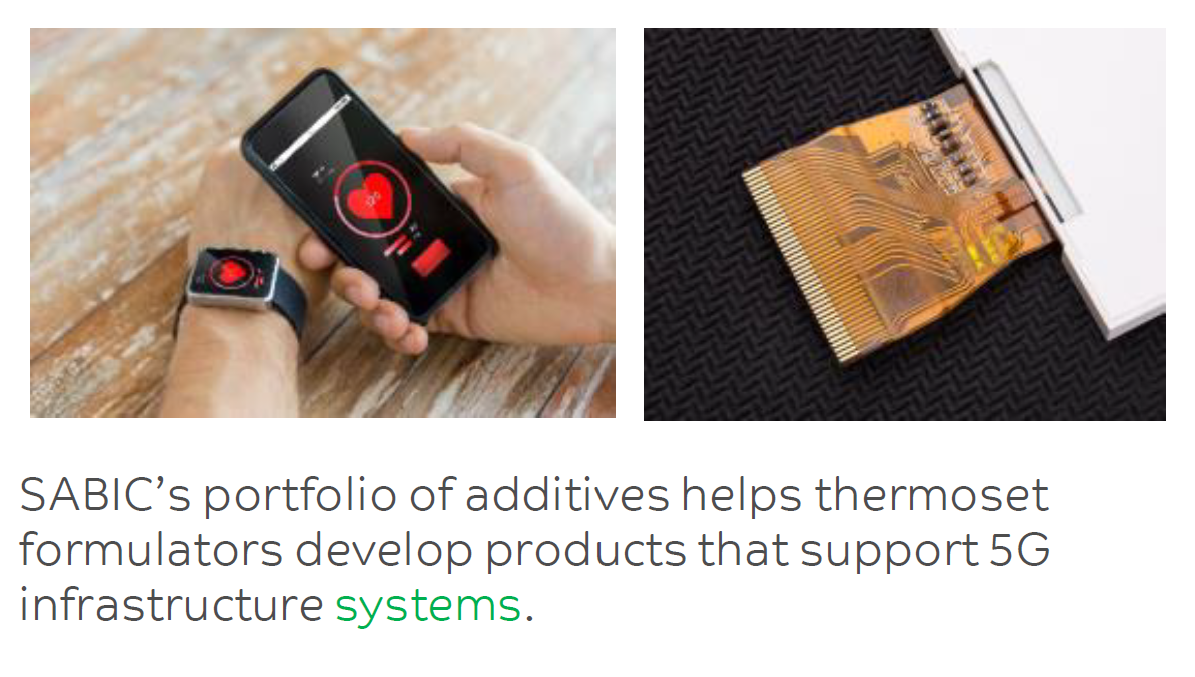
Achieving a unique balance of properties in polyimide chemistry
SD1100P powder is a high purity 4,4’-BPADA powder. When used in polyimide applications, SD1100P powder may offer performance improvements such as the solubility of polyimides in organic solvents, lower water absorption, and a lower dielectric constant and dissipation factor.


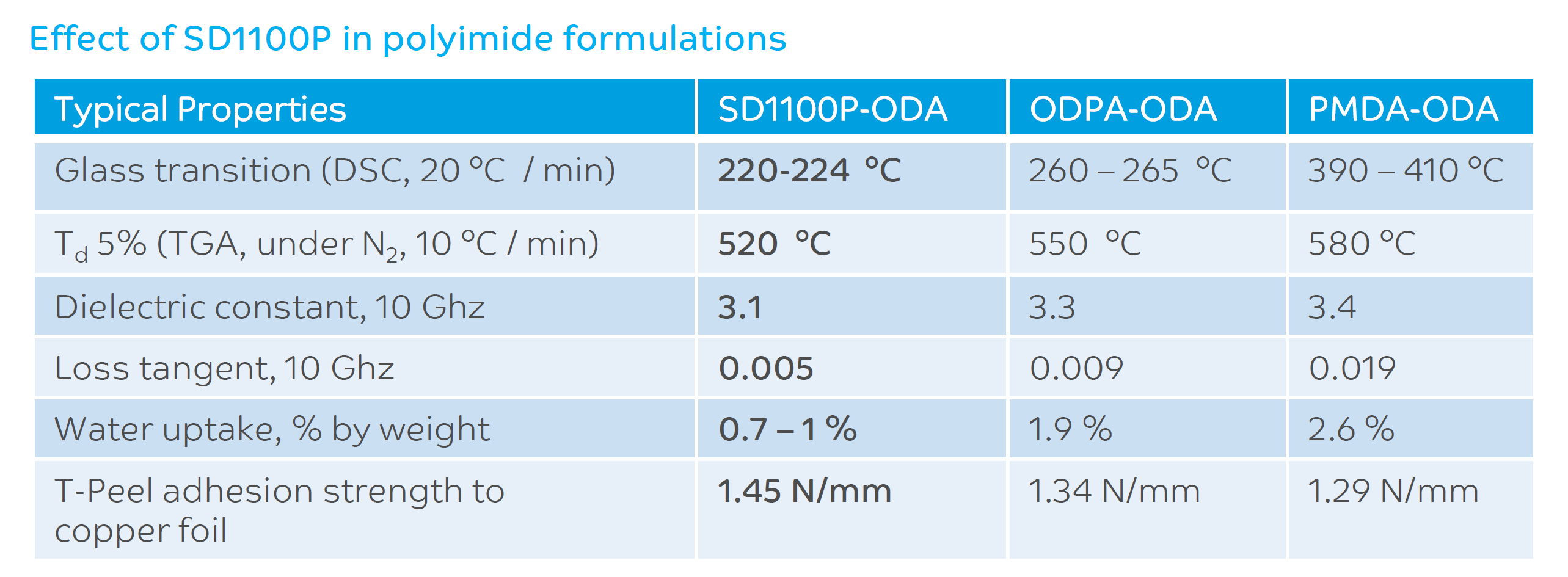
PRODUCTS AND GRADES
CONTACT US
Reach out to us for one-on-one support to ensure you have all the information and insights you need to choose the best-fit material for your application.Your PDF is downloading. Please wait.
Register for High value Multi-Point Data
- Access validated product data to streamline material selection
- Get inspired by innovative application ideas
- Register for high value multi-point data and a personalized experience

